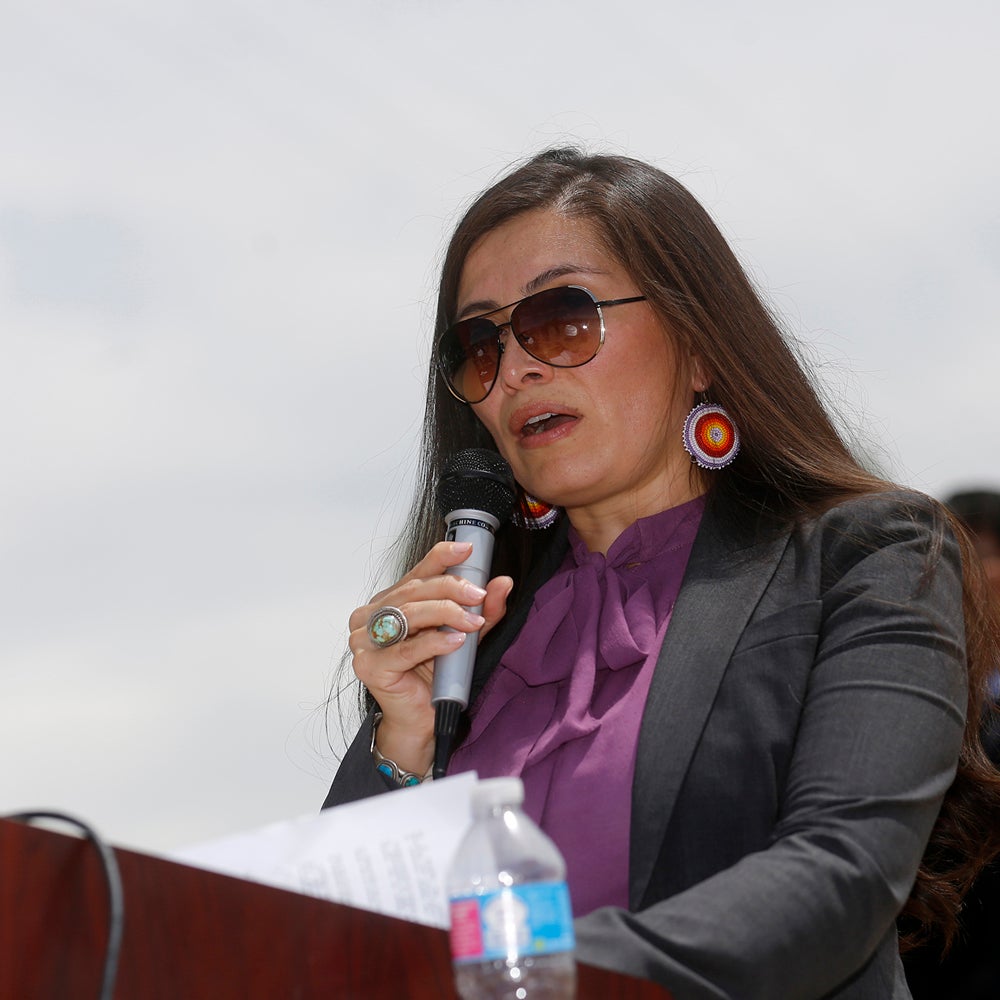The legal fight against President Donald Trump’s use of the Antiquities Act to shrink Bears Ears and Grand Staircase-Escalante national monuments is pretty straightforward. Take it from Navajo Nation Attorney General Ethel Branch. “There is nothing in the Antiquities Act that authorizes the President to modify a national monument once it’s been designated,” she says.
Suits challenging Trump’s proclamations, which cumulatively removed more than two million acres in Utah from protection on Monday, arrived swiftly. Late that day, Earthjustice—representing eight environmental organizations—teamed up with the Southern Utah Wilderness Alliance and the Natural Resources Defense Council to sue Trump for . On Tuesday, the five tribes represented in the Bears Ears Coalition—the Navajo, Hopi, Ute, Zuni, and Ute Mountain Ute—filed suit over Bears Ears getting hacked into two smaller monuments.
, Trump was advised to shrink rather than revoke the monuments because there's a precedent for such a move. (Woodrow Wilson halved Mount Olympus National Monument in 1915.) There are, however, major differences between now and then. Wilson’s move was designed to free up timber for the World War I effort, and it was never met with legal opposition. And Congress passed a law in 1976 that’s surely familiar to Utah’s Sagebrush Rebellion-inspired delegation—the Federal Land Policy and Management Act, which makes clear that the Antiquities Act, in Congress’ view at least, allows a president to designate national monuments and nothing else.
In July, that laid out the Trump Administration’s “profound misunderstandings of both the nature of national monuments and the President’s legal authority under the Antiquities Act.” In the letter, the attorneys cited specific language in the Federal Land Policy and Management Act as proof. For instance, the law states that the executive branch may not “modify or revoke any withdrawal creating national monuments.” The legislative history, the lawyers wrote, shows that Congress “reserved the authority to modify and revoke withdrawals for national monuments created under the Antiquities Act.”
“This opens the door to sort of a game of monument ping-pong, where you have anti-monument presidents stripping places of protection, only to be followed by pro-monument presidents who restore and even increase them,” says Earthjustice attorney Heidi McIntosh. “That’s clearly not what Congress intended.”
Because legal arguments are rooted in the language of the Antiquities Act and Constitutional authority (the Supreme Court has repeatedly found that, under the Property Clause, Congress is the lone body that can set regulations on and dispose of public land), many of the finer points that constitute the basis of the Trump Administration’s argument may not stand up in court. Take, for instance, Zinke’s oft-repeated claim that Trump’s decision to shrink the monuments came in response to a misinterpretation of the Antiquities Act by previous presidents. “When the powers are abused to make a monument into a park, that is not within the powers of the president under the Antiquities Act to do,” Zinke told the Washington Post. Yet he’s arguing the very same act justifies Trump’s sweeping changes to existing monuments.
In his , formally released Tuesday but leaked months ago, Zinke said landscape-scale monuments violate the act’s requirement that a monument be the “smallest area compatible” with protection of the object. But his interpretation places the focus on what sits outside the national monuments. One would be hard-pressed to argue that the size of Grand Staircase-Escalante was incompatible with the goal of protecting its unique geology and fossil record.
This notion is also on display with Bears Ears. During a recent airplane tour of the area, Friends of Cedar Mesa Executive Director Josh Ewing pointed out dozens of canyons and mesas with a “high density of archaeological sites.” Most of them fell outside the boundaries of Trump's new, smaller Shásh Jaa' and Indian Creek national monuments. Ewing’s point was clear: the new monuments are incompatible with protecting the sacred sites designated in the original Bears Ears proclamation.
Native American Rights Fund attorney Natalie Landreth, who represents the Hopi, Zuni, and Ute Mountain Ute tribes in the Bears Ears case, says this amounts to more than just the revisions for which the Trump Administration claims there’s a precedent. “This is a full-scale revoke and replace,” she said in a conference call. “It creates two different monuments with two different names and two different boundaries. This is not, no matter what they want to call it, a boundary modification.”
Both lawsuits were filed in federal court in the District of Columbia. Others are likely to follow soon: parties like climbing advocacy group Access Fund and gear maker Patagonia have said they’ll also sue. Other monuments are likely on the chopping block, too. Zinke’s report calls for Cascade-Siskiyou, in Oregon, and Gold Butte, in Nevada, to be re-sized, and he told the Washington Post he was “fairly confident” Trump will follow his recommendations.


